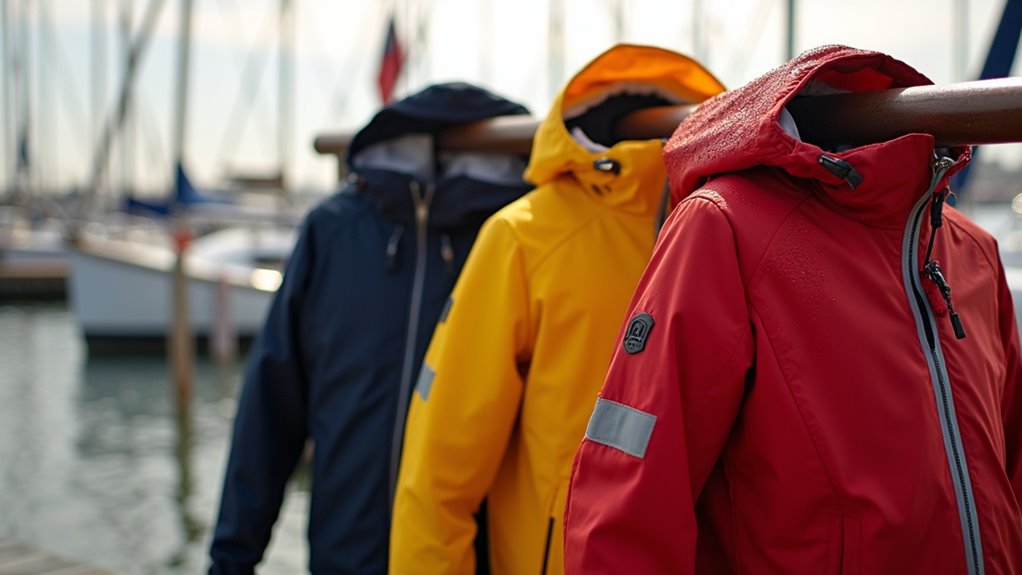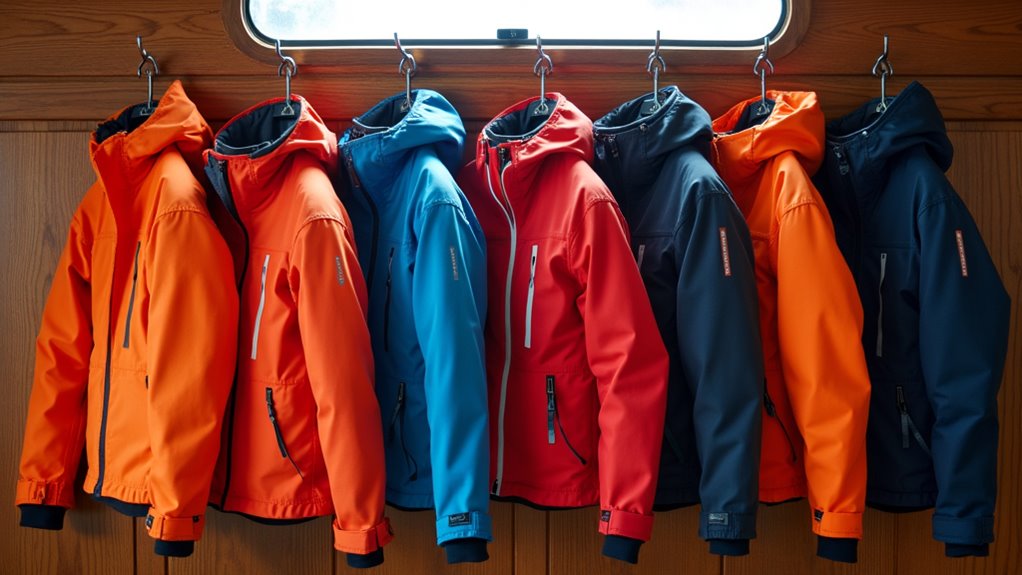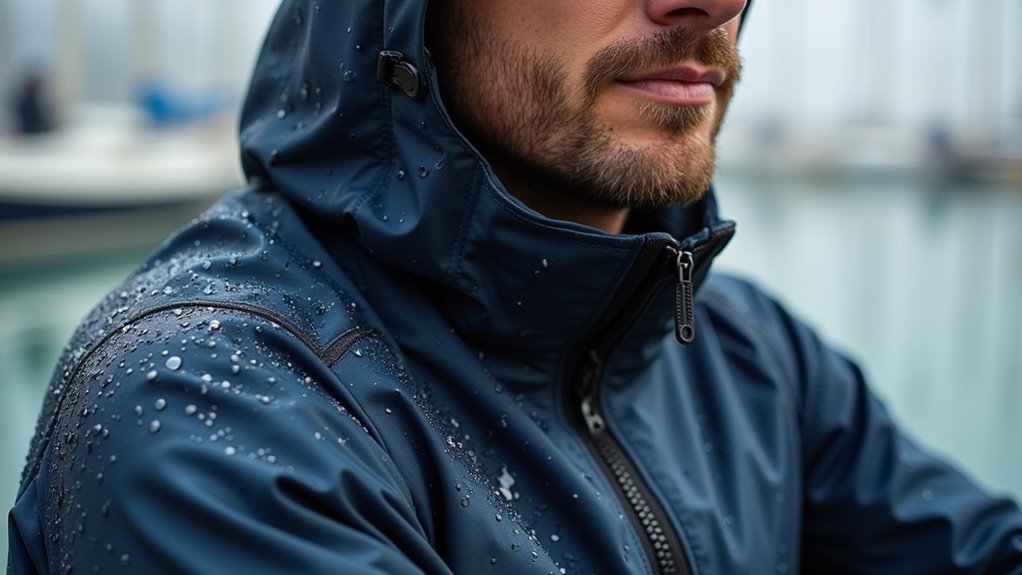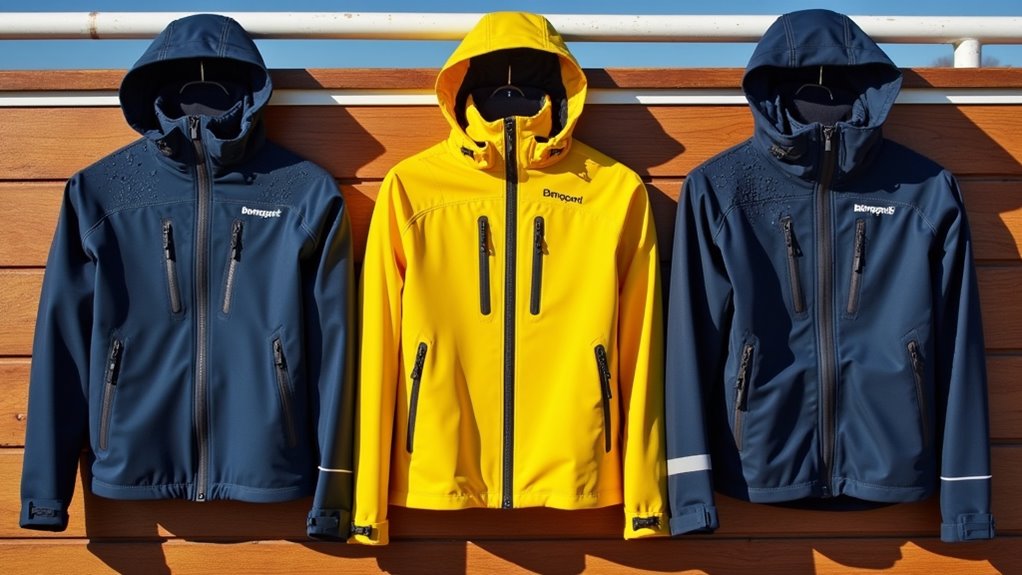Physical Address
304 North Cardinal St.
Dorchester Center, MA 02124
Physical Address
304 North Cardinal St.
Dorchester Center, MA 02124

How do you choose between inshore, coastal, and offshore sailing jackets when your comfort and safety are on the line?
When you’re ready to invest in a sailing jacket, you’ll quickly discover it’s not as simple as picking the first waterproof coat you see. You’re facing choices between inshore, coastal, and offshore designs, each with distinct features and price points. Whether you’re a weekend sailor or planning extended voyages, understanding the key differences in materials, fit, and performance ratings will save you money and keep you comfortable on the water. Let’s explore what really matters in selecting the right sailing jacket.

Sailors need to understand the key differences between sailing jacket types to make informed choices for their specific needs.
If you’re doing coastal day trips, you’ll want an inshore jacket that’s light and short for easy movement. For overnight coastal sailing, choose a coastal yachting jacket with more length and protection.
Planning extended sea voyages? You’ll need a heavy-duty offshore jacket with maximum weather protection. These jackets include fluorescent reflective patches for critical visibility during storms.
Racers should look for technical jackets with pre-bent sleeves and fluorescent details for visibility and mobility.
If you’re crew, opt for a more flexible jacket that still offers good movement and protection.
Each type features specific collar heights, hood designs, and pocket configurations to match your activity level.
Consider your sailing environment and duration when selecting the right jacket.
When choosing a sailing jacket, understanding its core features and design elements will help you make a smarter investment. Look for high, fleece-lined collars and double cuffs that provide essential warmth and protection.
You’ll want pre-bent sleeves for easy movement and adjustable elements to prevent water entry. Safety features shouldn’t be overlooked – verify your jacket has reflective details for low-light visibility and integrated harness points. For maximum protection, taped seams and zippers are crucial features that enhance waterproofing capabilities.
Smart sailors prioritize jackets with pre-bent sleeves and reflective details – these aren’t just comfort features, they’re essential safety elements.
The best designs include specialized pockets with drainage systems to keep your items dry. Consider jackets with 3-layer construction and microporous membranes like Gore-Tex, which offer both waterproofing and breathability.
For durability, check for Cordura reinforcement in high-wear areas and marine-grade fabrics. Don’t forget to test the waterproof zippers and confirm the mesh lining provides adequate ventilation.

Modern sailing jackets incorporate sophisticated materials and weather protection technologies that work together to keep you dry and comfortable.
You’ll find various waterproof membranes like Gore-Tex Pro and eVent that use PTFE technology to repel water while maintaining breathability. Many jackets feature three-layer construction with XPLORE+® fabric, tested to withstand 35,000mm of water pressure. Manufacturers are now developing plant-based coatings as environmentally friendly alternatives.
Look for jackets with sealed seams and waterproof zippers to prevent leaks. The best options include moisture management systems that wick sweat away from your body while blocking external water.
Advanced chemical coatings enhance water repellency and extend your jacket’s lifespan. For maximum comfort, consider models with air-permeable membranes that reduce clamminess during intense activity.
These features guarantee you’ll stay protected in challenging marine conditions.
Finding the right sailing jacket starts with accurate measurements and a clear understanding of your needs. You’ll want to measure your chest at its fullest point and your waist at its narrowest area, keeping the measuring tape horizontal for accuracy.
Consider how you’ll use the jacket. If you’re racing, look for a more streamlined fit with articulated elbows for better mobility. For casual sailing, you might prefer a relaxed fit that allows for layering underneath, giving you room for multiple base layers on colder days.
Don’t forget to check brand-specific size charts, as measurements can vary greatly between manufacturers like Gill and Helly Hansen.
Pay attention to adjustable features like cuffs and hem – they’re essential for wind protection. For year-round sailing, you might need both a lightweight summer jacket and a heavier winter option.
Choose colors and styles that match your team’s requirements or personal preferences.

Understanding performance ratings is essential before investing in a sailing jacket. Look for two key numbers: waterproof and breathability ratings. A waterproof rating of 20,000mm means excellent protection in heavy rain, while 10,000mm suits light to moderate conditions. Testing methods typically involve using a 1 x 1 square tube to determine waterproof ratings.
Waterproof ratings matter – 20,000mm keeps you dry in heavy weather, while 10,000mm works for milder conditions.
For breathability, higher numbers (like 15,000 g/m²/24h) mean better moisture transfer and less sweat buildup.
Don’t just focus on ratings – check the durability features too. You’ll want sealed seams, quality zippers, and reinforced stress points for longevity.
If you’re sailing offshore, prioritize jackets with the highest waterproof ratings and toughest construction. For coastal sailing, you can opt for lighter jackets with moderate ratings around 10,000mm.
Racing? Choose designs that balance movement with protection, focusing on high breathability.
Investing wisely in a sailing jacket means weighing both price and quality against your actual needs.
You’ll find entry-level options starting at budget-friendly prices, while premium brands command higher costs for advanced features and durability. When making your decision, consider the type of sailing you’ll do and how often you’ll use the jacket. The most essential features to evaluate are breathability and waterproofness in any price range. Helpful tips for camping without electricity can also be applied to staying prepared for unexpected weather conditions while sailing.
Don’t overlook outlet sales from premium brands – they’re an excellent way to get high-quality gear at reasonable prices.
Selecting your ideal sailing jacket doesn’t have to break the bank. Studies show that 85% of sailors prioritize waterproof ratings over brand names, proving that functionality trumps fashion. You’ll find the best value by focusing on essential features like sealed seams and appropriate weather protection for your sailing conditions. Consider last season’s models for significant savings while still getting the performance you need on the water.